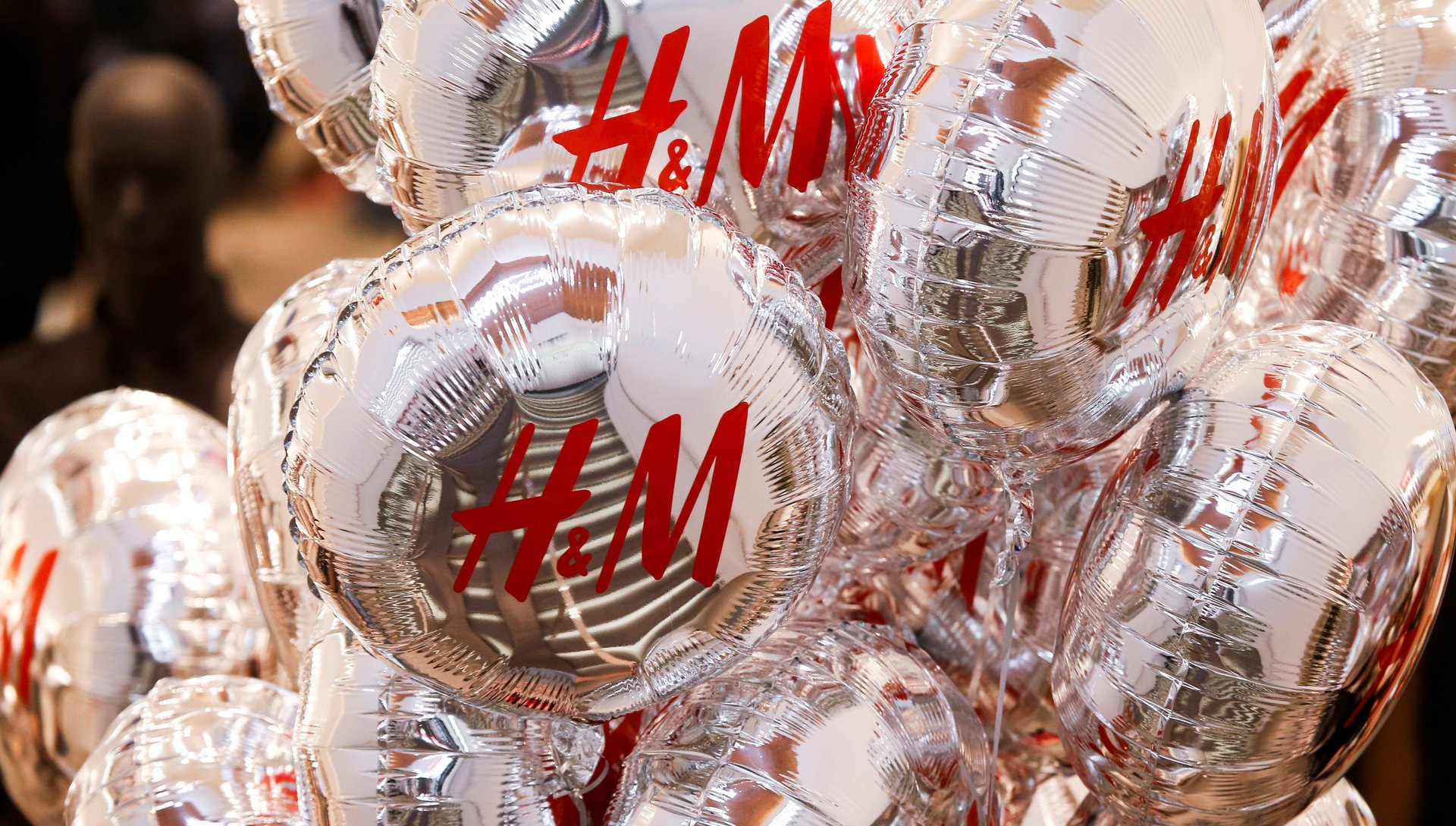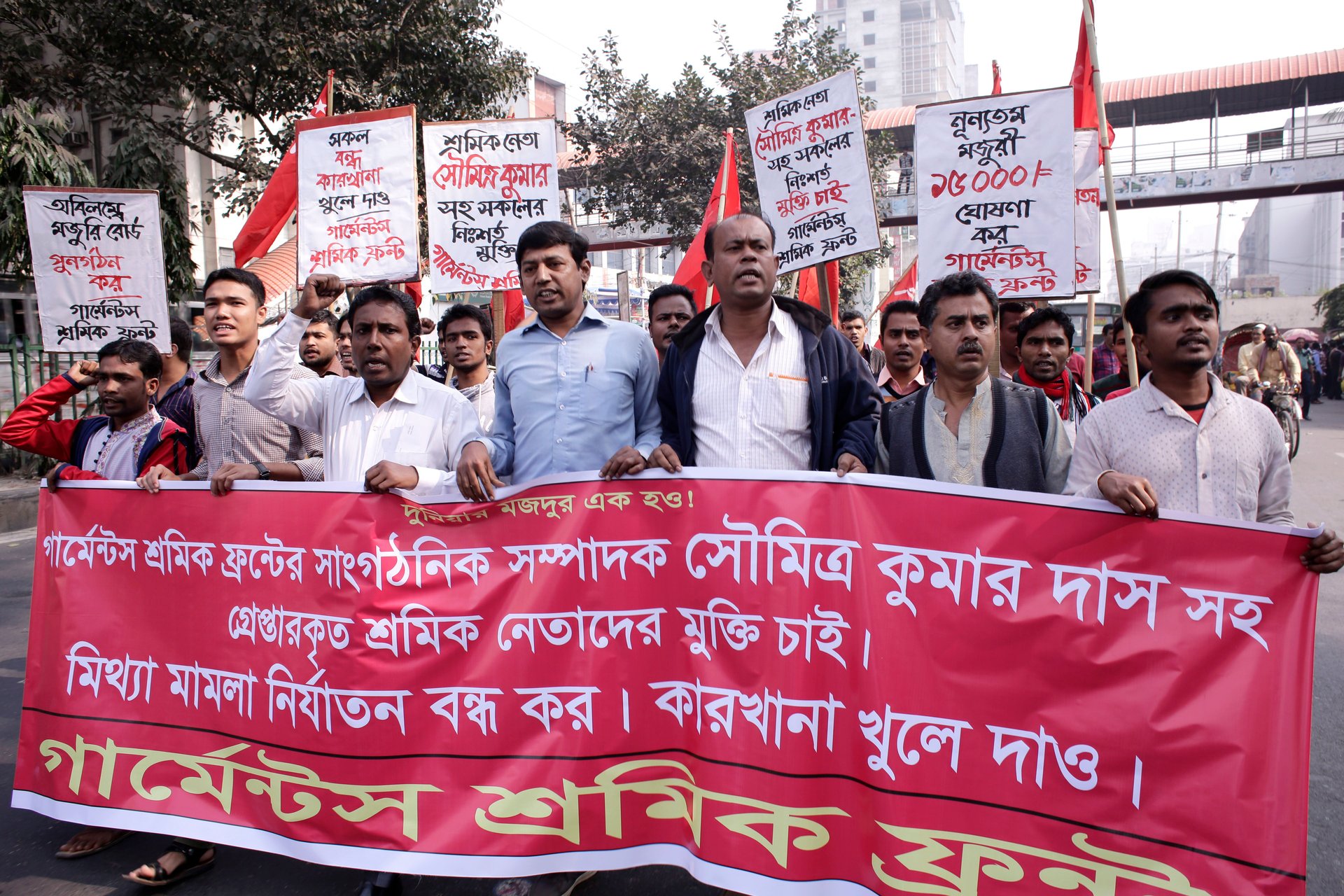A watchdog group suggests H&M’s promise to pay workers better was a publicity stunt
Companies often make bold commitments to hit sustainability targets by some remote point in the future. These promises, whether they’re about new environmental or social goals, can generate a lot of positive press for the brand when they’re first announced. But you don’t always hear about the progress made after that, which is what really matters.


Companies often make bold commitments to hit sustainability targets by some remote point in the future. These promises, whether they’re about new environmental or social goals, can generate a lot of positive press for the brand when they’re first announced. But you don’t always hear about the progress made after that, which is what really matters.
One such pledge was H&M’s big 2013 commitment (pdf) to ensure that the workers at its 750 suppliers in Bangladesh and Cambodia—which stitch 60% of its clothing—are paid a living wage by 2018. The definition of a living wage varies, but it’s generally enough income a worker to meet their own basic needs while still having enough leftover for discretionary income or to meet the needs of their family. In low-wage countries, garment workers often don’t make that much income. H&M’s noteworthy vow drew notice from major publications, including the New York Times editorial board. “H&M has set itself an important goal,” the Times wrote. “Now it has to demonstrate that it can achieve it.”
But the Clean Clothes Campaign, an international watchdog group for the garment industry, has accused H&M of not doing near enough to achieve the goal it very publicly proclaimed—or at least, making it impossible to know what progress has been made. “Over the past five years since declaring their living wage initiative, H&M has been notoriously opaque regarding their plans which has raised questions as to whether their promise was merely a publicity stunt to allay public concern about their fast fashion brand,” the group said in a statement.
Garment workers’ salaries in Bangladesh have risen since 2013—the year of the deadly Rana Plaza factory collapse—to about $67 per month. The Clean Clothes Campaign says that, according to H&M, workers at H&M’s suppliers in Bangladesh earn about $87 per month, notably higher than the minimum. But based on an analysis by the Fair Labor Association, that amount is far from the estimates (pdf) of a living wage in the country. For a family of one earner and three dependents, it even falls below the World Bank’s international poverty line.
H&M did not dispute the figures when contacted. “Wages are still low in the industry and reasons for this are many and complex,” the company said in a statement. “There is no silver bullet to how fair living wages are to be achieved. It takes a lot of effort and dedication from all parties to get there. We remain dedicated to our role and responsibility as a company in this joint work.”
The Clean Clothes Campaign points out that wages in Bangladesh would have to triple to meet the average estimated living wage, which would let a worker “afford a healthy diet, proper housing, access to medical care and access to education for children.” About a year ago, tens of thousands of workers in the Ashulia garment district, which produces clothes for brands including H&M, Gap, and Zara, protested their low wages, demanding a three-fold increase in salary to allow them to meet their needs.

What makes the situation complicated is H&M doesn’t directly set the wages at its supplier factories. The owners, unions, and Bangladesh’s government are largely responsible for that. As H&M pointed out, there are a variety of factors that it doesn’t control.
But Ineke Zeldenrust of the Clean Clothes Campaign says H&M does have leverage. “Brands have a lot more power over this than is generally thought,” she explains. “First of all, they can put pressure on local governments. Local governments are afraid they will lose international buyers if wages get too high. But if brands commit to long term and sustainable relationships with certain factories and promise not to end collaboration once minimum wages rise, this could result in significant wage increases.”
Whether H&M is able to meet its living-wage goals matters. Zeldenrust points out that H&M isn’t just one of the biggest clients of these factories, it’s also the only brand to have made a pledge like this. They’ve established themselves as a leader on this issue, and they have to show the way if other brands are going to follow.
The Clean Clothes Campaign also charged H&M with not being transparent about how it will actually achieve its living-wage targets, a criticism the Times made as well at the time of H&M’s initial announcement. It says H&M hasn’t shared actual measurable steps publicly, which means it’s impossible to track their progress.
H&M counters that it has issued frequent updates through its annual reports and in bulletins. “Since the launch of our fair living wage strategy in 2013, we have had an ongoing dialogue about both challenges and progress with stakeholders,” the company said in a statement. “We report annually both to stakeholders and media about the activities and actions within the fair living wage strategy, also to Clean Clothes Campaign.” A May 2017 media update, for instance, addressed its living-wage goals directly.
But that update didn’t offer information on whether or how much wages had increased at its suppliers, for instance, and according to Zeldenrust, that’s exactly the problem. “The reason why CCC thinks H&M has been opaque is mainly because in its public statements (annual reports, sustainability reports) H&M appears to have changed direction,” she says. “The promise that H&M made initially was to pay all workers in its supply chain a living wage by 2018. However, over the course of the last four years, whenever asked about its promise, H&M mentions more processes and alliances they have joined, like ACT and the Fair Wage Network. They don’t mention when, by how much, and where wages will be increased, and these other processes also are not specific on amounts or timelines.”
All that makes it difficult to judge whether H&M will reach its goal of raising workers to a living wage at those supplier factories.
H&M says it’s confident it will. Though in its statement, it says its goal for 2018 is “to set up democratically elected worker representatives committees and improved wage management systems at suppliers representing 50% of our product volume.” Long-term, it adds it does want all its suppliers paying a “fair living wage” to workers.
What does the Clean Clothes Campaign think? “We remain hopeful that they will live up to their word,” Zeldenrust says.